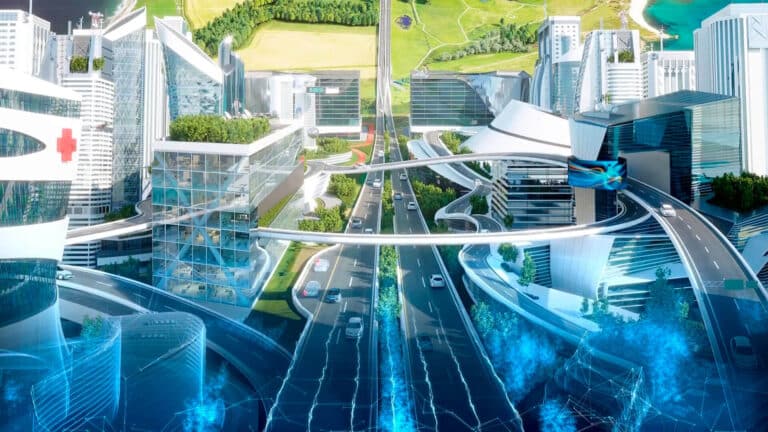“We believe virtual reality is going to change the world,” said HTC Vive senior vice president Rikard Stelber when announcing the launch of their app store for virtual reality worldwide this fall. A lot of similar statements have been heard during this year. 2016 has in many occasions been named the year of virtual reality; new devices, games and content have entered the market, big investments have been made in companies developing VR, and consulting firms have published predictions of a billion dollar business. The hype around VR is hot.
Demystifying the hype
“Once again!” say researchers Jukka Häkkinen and Takashi Kawai from the Visual Cognitive Research Group at the University of Helsinki, Institute of Behavioral Sciences. The two scientists have a long history of research in head-mounted displays and virtual reality and have certainly seen a few hypes come and go. As an example, they mention the 3D TV. “Despite the early hype it never became a success,” says Jukka Häkkinen, and asks if it in the end came down to the fact that the content was not so attractive and didn’t give real added value to the consumers.
However, when it comes to virtual reality the two want to demystify the hype and contribute to the development of VR with their research. The Finnish-Japanese VR and 360 video research program started in April this year. The research program is a co-operation of University of Helsinki, where Häkkinen works as principal investigator and university researcher, and Waseda University from Tokyo, where Kawai is a professor at Department of Intermedia Art and Science at the Faculty of Science and Engineering. Right now Kawai is a visiting professor at the University of Helsinki and the joint research effort aims to create evidence-based guidelines for better user experiences and virtual reality contents.
Focus on user experience
The program focuses on head-mounted displays (HMD) experience and ergonomics from the user aspect. The key questions in the research program are therefore: What are the positive experiences and how to facilitate them, and on the other hand what are the negative experiences and how to avoid them? The topic as such – scientific research of user experience in virtual reality– is rather new. “Naturally, as the technology has been there to experience for only a short time, there hasn’t been much research yet. One of the challenges in the research is to how to explore the experiences in a new medium properly without assuming too much,” says Jukka Häkkinen. “We want to try to understand the user characteristics, the emotional aspects, formalize the knowledge and make it research based,” says professor Kawai.
When talking about the user experiences, a topic that cannot be avoided is cyber sickness. Cyber sickness, or virtual reality sickness, involves symptoms – nausea, headache, drowsiness, general discomfort etc. – experienced by some after exposure to virtual environment. Especially now that the consumer devices have entered the market, the issue of cyber sickness has been gaining more attention. Traditionally, the professional users of VR have been more tolerant of discomfort. Häkkinen and Kawai tell an example of early use of virtual reality in training of helicopter pilots. Unfitting helmets caused bleeding in head, but the pilots didn’t want to report the negative sides in order to not to risk getting to fly.
But when it comes to consumers, there is hardly such tolerance. That is why the issue is taken seriously. For example the head-set manufacturer Oculus is employing three comfort ratings: “comfortable”, “moderate” and “intense”, based on the degree of camera movement, player motion or disorienting content and effects etc.
Häkkinen and Kawai, however, say that it is not inevitable that there are always symptoms when a headset is used. According to their research, there are multiple factors that are affecting the user experience: interaction, display, content, and also the user conditions. For example, depth magnitude, i.e. too high depth values for a long time, has been shown to cause eye strain. “Another factor to take into account is, for example optical design and headset design. We are all individuals and just like with eyeglasses, one model might not fit all. The question is: what is the optimal size,” explains Takashi Kawai. “Our aim is to – within the framework of our research program – to be able to create guidelines that optimize as many of the aspects as possible.”
VR creates stronger emotions
But as said, the research does not only concentrate on the negative experiences and how to avoid them. The other main goal is to give research-based evidence on what the positive experiences are and how they can be enhanced. “Our research shows, for example, that virtual reality content creates much stronger emotions than traditional media,” Häkkinen and Kawai say. The creators of virtual reality content have a lot of hands-on knowledge on how to trigger the emotions and create compelling content. Another important aspect in the research program is interaction with the different players, especially the content creators and the technology developers. “There is a lot of tacit knowledge that the players have. Our aim is to explain it in a scientific manner and spread the knowledge,” Takeshi Kawai explains.
Killer content and guidelines for ergonomics
As more and more devices are coming to the market, the researches believe that, for example, game consoles will be the next step in VR breakthrough. But, as Jukka Häkkinen points out, virtual reality is not only about technology. “Content is important. To attract the big masses you need killer content.”
For augmented reality, we have seen the killer content this summer as flocks of people are wandering the streets and parks, staring at their mobile phones and hunting Pokemons. For virtual reality, the killer content is yet to be seen. But it might not take long before we see it. And what comes to the ergonomics, Häkkinen and Kawai are planning to have some guidelines ready within a year to spread the knowledge on how to make the experience better for the users.

